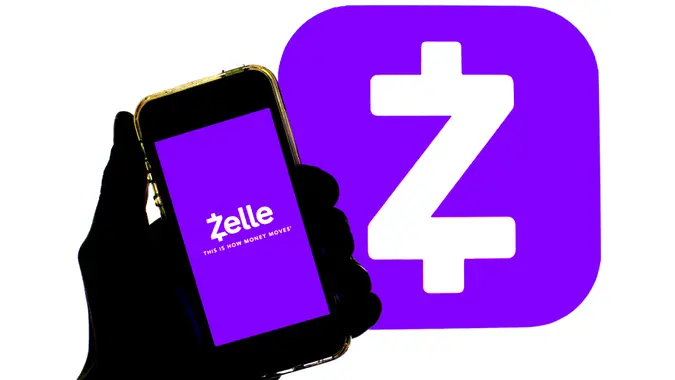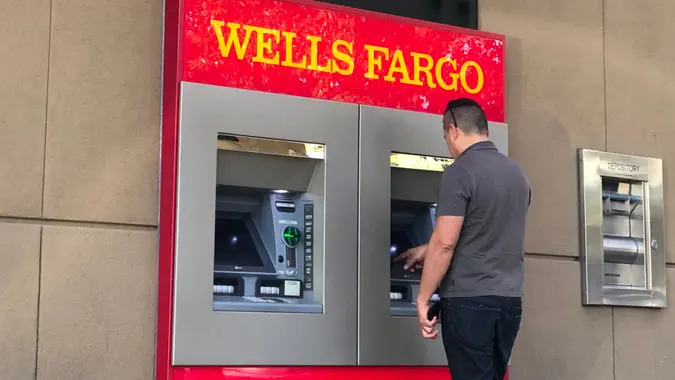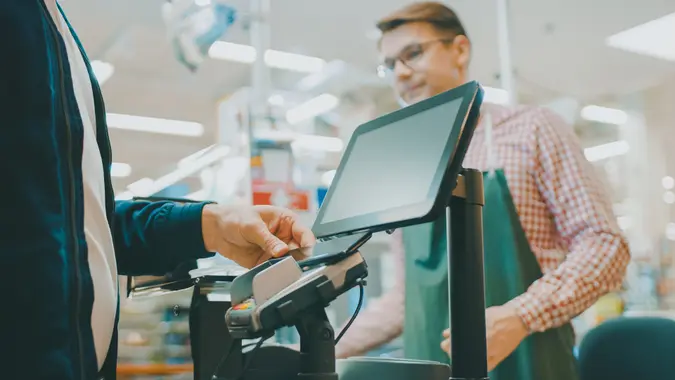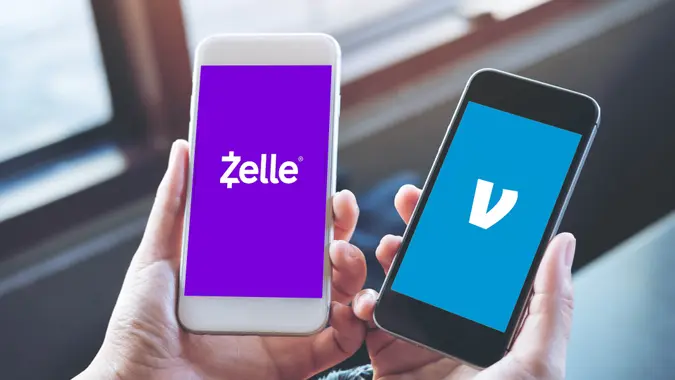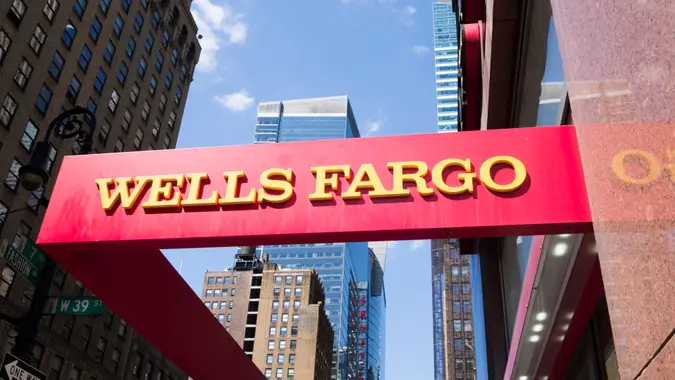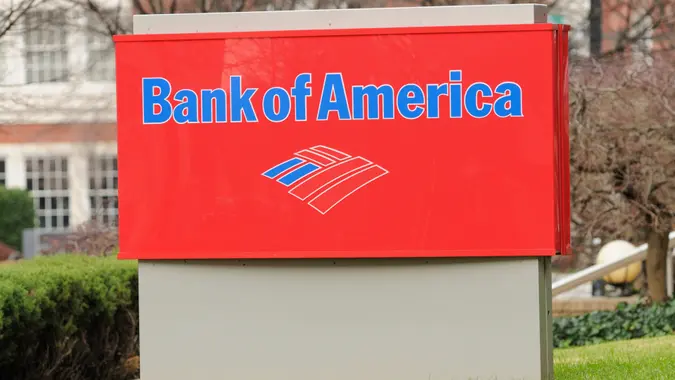Is Venmo Safe to Use? Security Features and Tips

Commitment to Our Readers
GOBankingRates' editorial team is committed to bringing you unbiased reviews and information. We use data-driven methodologies to evaluate financial products and services - our reviews and ratings are not influenced by advertisers. You can read more about our editorial guidelines and our products and services review methodology.

20 Years
Helping You Live Richer

Reviewed
by Experts

Trusted by
Millions of Readers
Venmo has become one of the easiest ways to send and receive money, whether you’re paying your roommate for rent, splitting a dinner bill, or chipping in for a group gift. But with money moving so fast, you might be wondering: Is Venmo safe to use?
The good news? Yes, Venmo is generally safe — but only if you take the right precautions. The app offers encryption, fraud monitoring, and security features, but like any digital payment platform, it’s not immune to risks like scams and unauthorized access.
In this guide, we’ll break down how Venmo works, its security features, potential risks, and how you can protect your account. Plus, we’ll clear up whether Venmo is free and what fees you should watch out for.
How Venmo Works
Venmo is a user-friendly app that makes it easy to send and receive money. To send money, you open your Venmo app and type in the recipient’s name, email or phone number. You can link your bank account, debit card or credit card to fund transactions, making it super convenient for quick payments. A bank account allows for direct transactions and withdrawals, while a debit card facilitates instant transfers and withdrawals. There’s a 3% fee charged for credit card transactions.
Here’s a breakdown of some key features:
Key Features:
- Send and receive money in seconds.
- Link to a bank account, debit card, or credit card.
- Use Venmo to pay businesses and online stores.
- Split bills and add fun payment notes with emojis.
One thing that sets Venmo apart from other payment apps is its social feed. By default, your transactions (minus the amount) are public, meaning your friends — or even strangers — can see who you paid and why. This social aspect is fun but can pose privacy concerns, which we’ll cover later.
Venmo also has a social feed that displays your public transactions. If you want privacy, navigate to your settings, access privacy, and change it to private. Venmo also has a feature that allows select people (your friends on the app) to see your transactions.
How Secure is Venmo?
Venmo is owned by PayPal, a major player in the online payment world, and follows strict security measures to keep your money safe. Here’s what they do to protect users:
1. Encryption & Data Protection
Venmo uses data encryption to keep your financial info secure. This means your bank details and card numbers aren’t stored directly on your phone or visible to other users. Venmo is considered a regulated money transfer service and encrypts your financial data. Data is stored on servers in secure locations. To indicate encryption is on, Venmo uses “https:” and a lock icon next to the web address.
2. Two-Factor Authentication (2FA)
Venmo offers two-factor authentication (2FA) as an extra layer of security. When enabled, you’ll need to verify your identity with a code sent to your phone or email before logging in. With 2FA you are also required to enter a code via text or the authenticator app to access your account.
3. Fraud Monitoring & Alerts
Venmo monitors accounts for suspicious activity and may flag transactions that seem out of the ordinary. If fraud is detected, Venmo might freeze your account temporarily until you verify your identity.
4. Buyer & Seller Protection (Limited)
Venmo does offer some protection for buyers and sellers, but it’s not as comprehensive as PayPal’s. If you pay a verified business through Venmo, you may be eligible for Venmo’s Purchase Protection, but transactions between friends aren’t covered if something goes wrong. Venmo offers a buyer protection plan.
If an eligible item is damaged, doesn’t arrive or is significantly different from the description, Venmo may refund the full amount and the shipping costs. To qualify for this protection, users must indicate they are paying for a good or service before completing the transaction.
Potential Security Risks of Using Venmo
Venmo comes with inherent security risks like scams and frauds, privacy risks, unauthorized access to your account and the absence of FDIC insurance.
Despite its security features, Venmo isn’t 100% risk-free. Here are some common concerns:
1. Scams & Fraud
Because Venmo transactions are instant and often irreversible, scammers love targeting users. Some common Venmo scams include:
- Fake buyers: Someone “pays” you for an item, but the payment later disappears because they used a stolen credit card.
- Phishing emails: Scammers send fake emails pretending to be Venmo, tricking users into sharing their login details.
- Overpayment scams: A scammer “accidentally” sends you extra money and asks for a refund — but the original payment never clears.
How to Avoid It: Only send money to people you trust and be cautious about selling items to strangers through Venmo.
2. Public Transactions & Privacy Risks
By default, Venmo makes your transactions public — which means anyone can see who you paid and why.
How to Fix It: Go to Settings, then Privacy and set your transactions to Private.
3. Unauthorized Access to Your Account
If someone hacks your Venmo, they can drain your funds or send money without your permission.
How to Prevent It:
- Use a strong, unique password.
- Enable two-factor authentication (2FA).
- Log out of Venmo when using shared devices.
4. No FDIC Insurance for Venmo Balances
Unlike a traditional bank account, Venmo balances aren’t FDIC-insured. If Venmo goes bankrupt or your funds are stolen, you might not get your money back.
How to Protect Yourself: Regularly transfer money from Venmo to your bank account.
How to Keep Your Venmo Account Safe
There are certain measures you can take to keep your Venmo account safe and secure. Here are some tips:
Use a Strong Password and 2FA
You want to use a strong password to protect your Venmo account. Choose a password that is 12-16 characters long and contains letters, numbers and special symbols. You should enable two-factor authorization (2FA). You can open the Venmo app, access your settings and click on “Security.” You can select two-factor authentication to add another layer of security.
Enable Privacy Settings
If you don’t want your transactions to be viewed publicly, you can set them to be private. You can change settings to private on the app. You can open your Venmo app, go to “Settings” and tap on “Privacy.” You can select “Who Can See My Transactions” and mark them as private. Keeping your transactions private will ensure the wrong eyes don’t have access to your personal information.
Link a Debit Card Instead of a Bank Account
In case there is a dispute, using a debit card makes the issue easier to resolve. If you use your debit card and your account is hacked, then you won’t compromise your entire bank account. Banks offer fraud protection for debit cards.
Be Wary of Scams and Suspicious Requests
Sometimes scammers pose as friends and family to steal funds from you. If you receive an urgent request, be wary as it could be a scam. If you receive an overpayment and a refund is requested, this could also be a suspicious transaction.
Is Venmo Free? Breaking Down the Costs
Venmo is mostly free, but some transactions come with fees. Here’s a breakdown:
Free Features
- Sending & receiving money (from a linked bank account or debit card)
- Making purchases with Venmo at select merchants
- Standard bank transfers (1-3 business days)
Fees to Watch For
- Instant Transfers: 1.75% fee (minimum $0.25, maximum $25)
- Credit Card Payments: 3% fee for sending money
- Business Transactions: 1.9% + $.10 per transaction
Use standard transfers and link a debit card instead of a credit card to avoid extra fees.
Final Thoughts to GO: Is Venmo Safe to Use?
Yes, Venmo is safe if used correctly. It offers encryption, fraud monitoring and two-factor authentication, but users must take precautions to avoid scams and protect their privacy.
Who Should Use Venmo?
Best for: Sending money to friends & family, small everyday transactions.
Not ideal for: Large transfers, business transactions (unless using a business account), or transactions with strangers.
Make sure to enable security features, keep transactions private and only send money to people you trust to make Venmo as safe as possible.
FAQs: Common Questions About Venmo's Safety & Fees
Here are the answers to some of the most frequently asked questions about Venmo and how safe the service is.- Is Venmo safe for large transactions?
- Venmo is primarily for friends and family. The platform warns against sending large amounts of money and has transaction limits for unverified and verified users.
- Can someone hack my Venmo account?
- Every online service is vulnerable to hackers. Users should use unique passwords, enable two-factor authorization and regularly monitor their accounts for suspicious activity.
- Does Venmo refund money if I get scammed?
- Venmo generally does not offer refunds if you get scammed. It's crucial that you verify the recipient's identity and that you're sending money to a trusted individual.
- What happens if I send money to the wrong person?
- There's no guarantee that you will recover your funds. You can send a payment request to the recipient for the same amount explaining your mistake. If that doesn't work, you can contact Venmo's resolution center.
- Is Venmo free to use for international transactions?
- Venmo doesn't support international transactions. Venmo only works in the United States.
Information is accurate as of Feb. 24, 2025.
Editorial Note: This content is not provided by any entity covered in this article. Any opinions, analyses, reviews, ratings or recommendations expressed in this article are those of the author alone and have not been reviewed, approved or otherwise endorsed by any entity named in this article.
Our in-house research team and on-site financial experts work together to create content that’s accurate, impartial, and up to date. We fact-check every single statistic, quote and fact using trusted primary resources to make sure the information we provide is correct. You can learn more about GOBankingRates’ processes and standards in our editorial policy.
- Venmo "Website"
- Venmo "Login Security"
- Venmo "Buyer/Seller Protections"
- Federal Deposit Insurance Corporation "Deposit Insurance"
- Venmo "Common Scams on Venmo"
 Written by
Written by  Edited by
Edited by 




